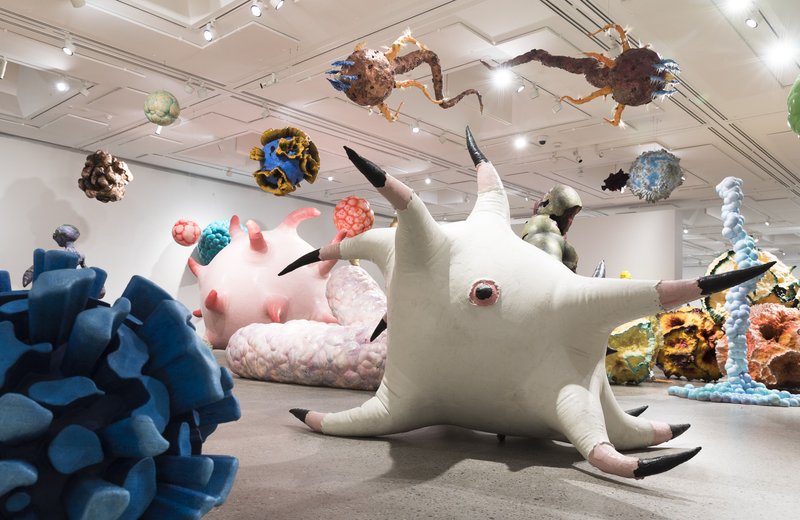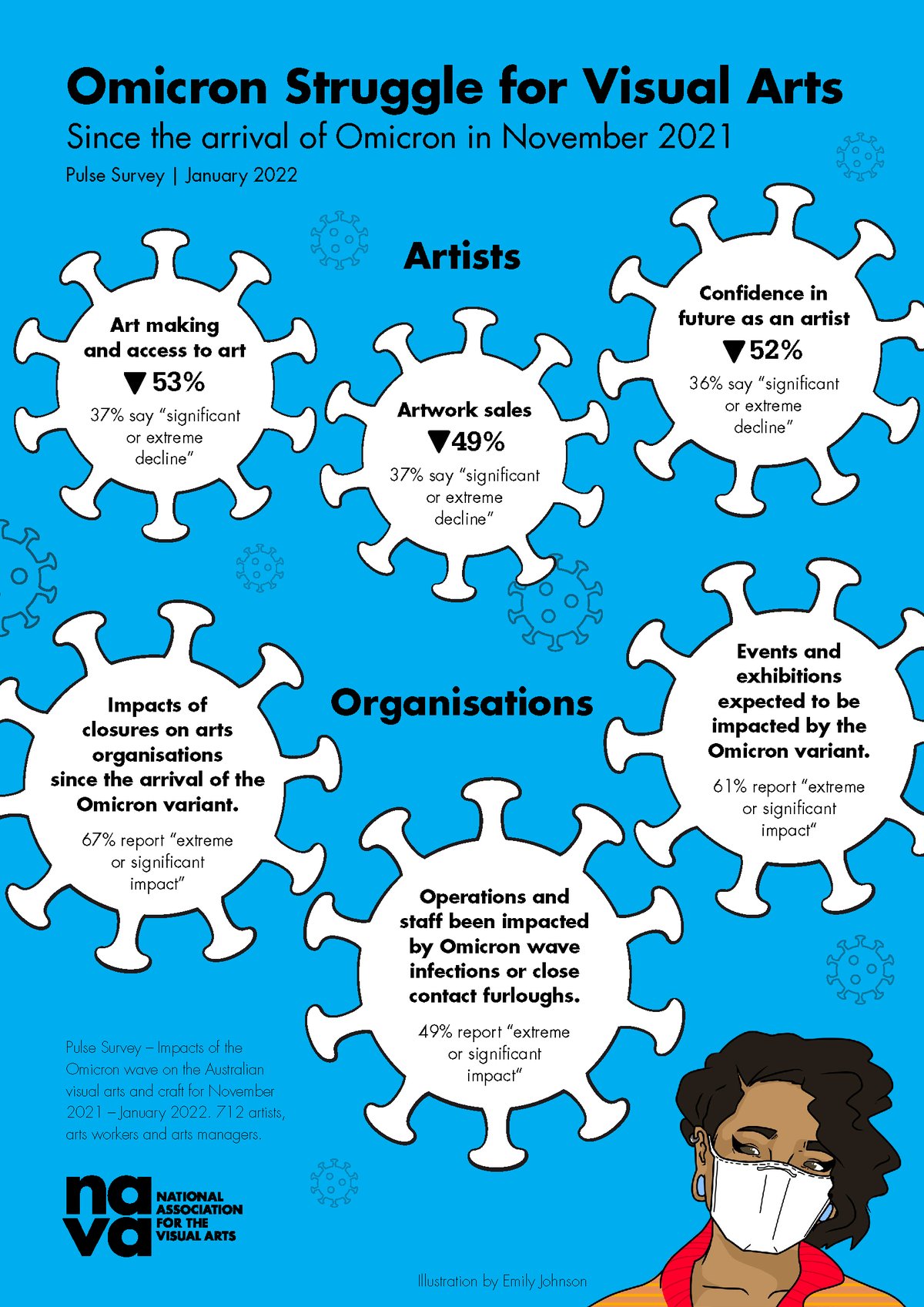Omicron Struggle for Visual Arts - Pulse Survey data
Recent research by NAVA reinforces need for crisis funding for independent visual artists, a federally-backed insurance scheme and a new artwork fund.
Recent research by NAVA reinforces need for crisis funding for independent visual artists, a federally-backed insurance scheme and a new artwork fund.

Image: Christopher Langton, Colonies, 2021, installation view, Hazelhurst Arts Centre. Photography by Silversalt.
[Image description: Photo of installation at an art gallery featuring gigantic plastic blow-up sculptures of organisms in the shape of viruses, bacteria and fungi in various bright colours.]
Targeted visual arts crisis funding for independent artists, a federally-backed insurance scheme and a new artwork fund is urgently needed to see sustained recovery for the arts. Recent research undertaken by NAVA has revealed the ongoing impacts of the devastating Omicron wave on an already weakened visual arts sector. Visual artists report concerning declines in artwork sales, art making and confidence while organisations remain apprehensive over worsening prospects for organisations’ sustainability.

Illustration by Emily Johnson.
[Image description: A4 infographic of NAVA survey findings on bright blue background. Title reads: Omicron Struggle for Visual Arts. Infographic depicts six survey findings (information below) each contained within white germ-shaped graphics with black outlines. Illustration bottom right of an artist with shoulder-length black hair and brown skin, wearing a white face mask and a yellow polo shirt.]
Comments from survey respondents:
“Omicron has made it impossible to imagine any opportunities to exhibit and I find it difficult and distressing to think about the future.”
“There is so much uncertainty, artists are scared to book the gallery for an exhibition, because what is the point of investing so much time and money in materials and creating if no one will come to the opening or the exhibition. The feeling of despair is palpable.”
“Should this consumer hesitancy continue past the current Omicron wave, I don't know if our organisation will be able to continue existing.”
Despite a growing body of research that points to the benefits of the arts and creativity on health and wellbeing, there is such reduced opportunity for work in the visual arts, we fear a generation of artists and arts workers will be lost as people have had to find work in other areas to survive.
Meanwhile, many Aboriginal Art Centres have experienced a complete loss of income. "There is a very real and immediately felt economic impact of remote community art centres closing due to safety concerns around Covid-19,” says Clothilde Bullen (Wardandi/Badimaya), Chair of NAVA.
“Tourist income has ceased and artists are often returning to their homelands to stay safe, which means that they are not able to access other forms of income. Due to the pandemic Aboriginal artists in regional areas have also felt the brunt of the lack of visitation to Keeping Places and other cultural tourism centres and galleries through which Aboriginal community members earn an income."
The Covid-19 pandemic continues to impact the number of active artists producing artworks and together with the loss of tourism traffic, artwork sales have been hit hard. Escalating coronavirus outbreaks and heavy floods in remote Central Australia are currently having a devastating impact on remote Indigenous communities.
As both the Senate and the House return for the first week of sittings in 2022, NAVA renews calls to get visual arts recovery back on the political agenda ahead of the upcoming federal election. We’re calling for:
Moving forward, Australia needs a whole of government cultural policy framework to support the long-term sustainability of artists’ careers and arts organisations.